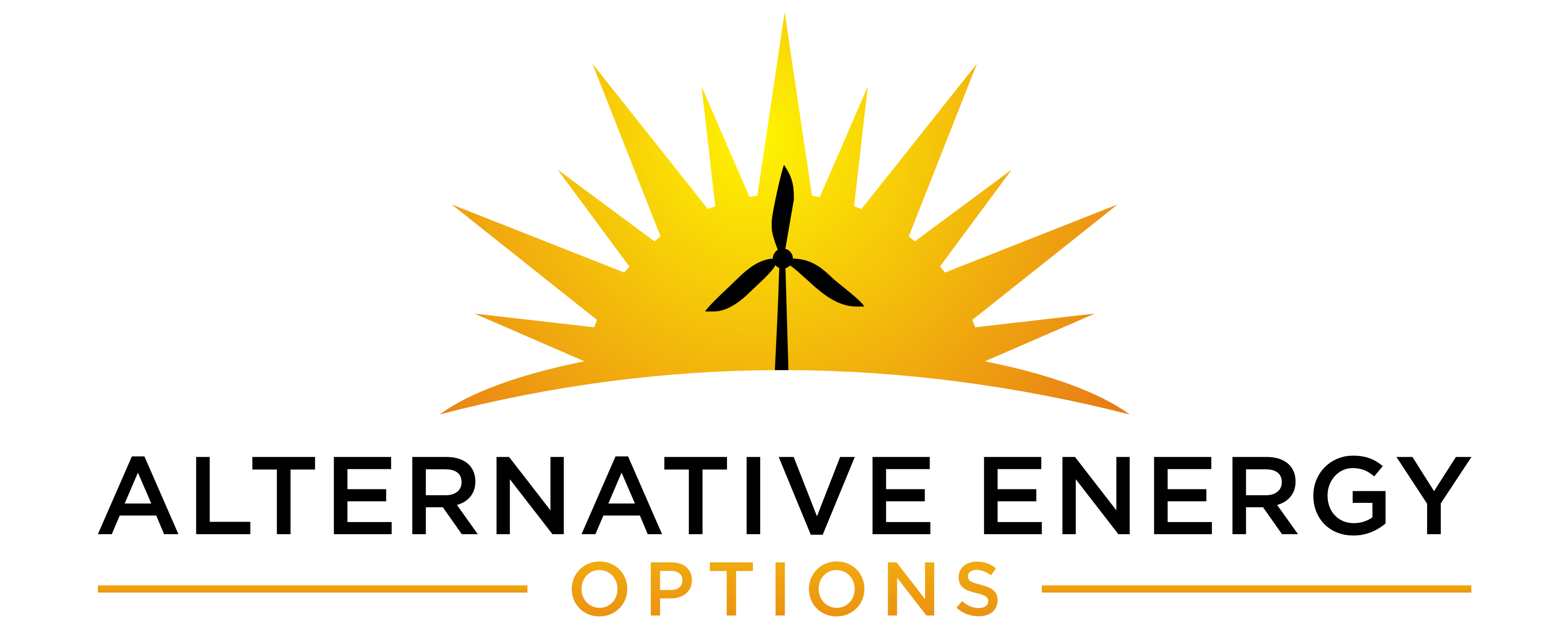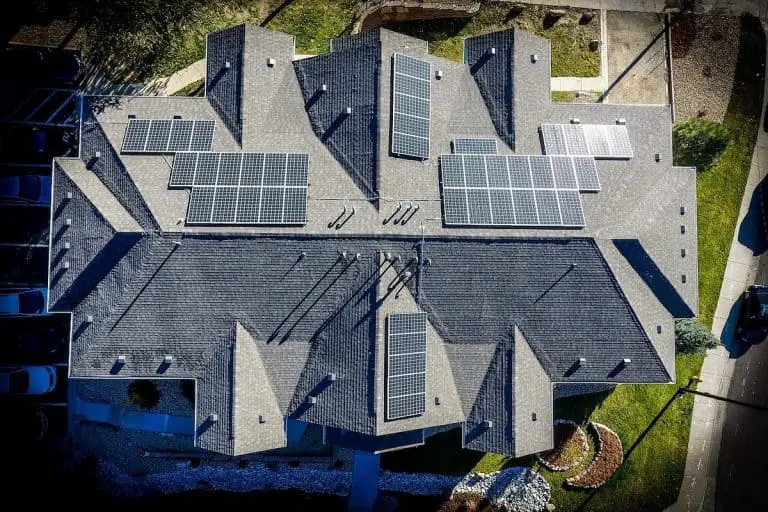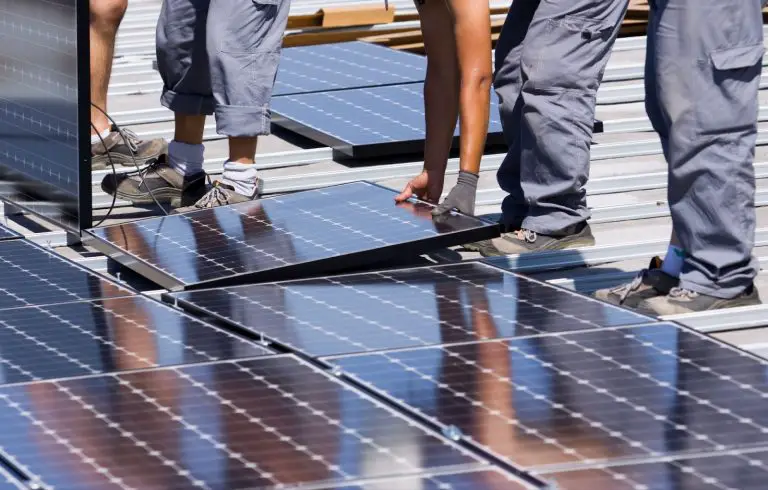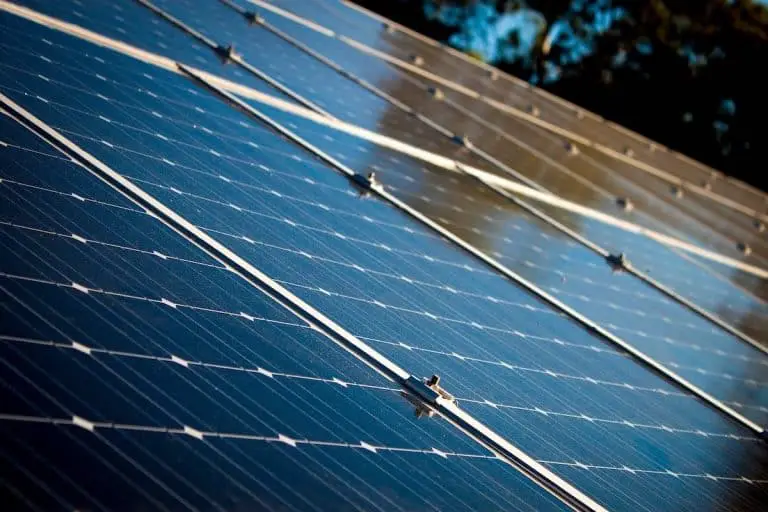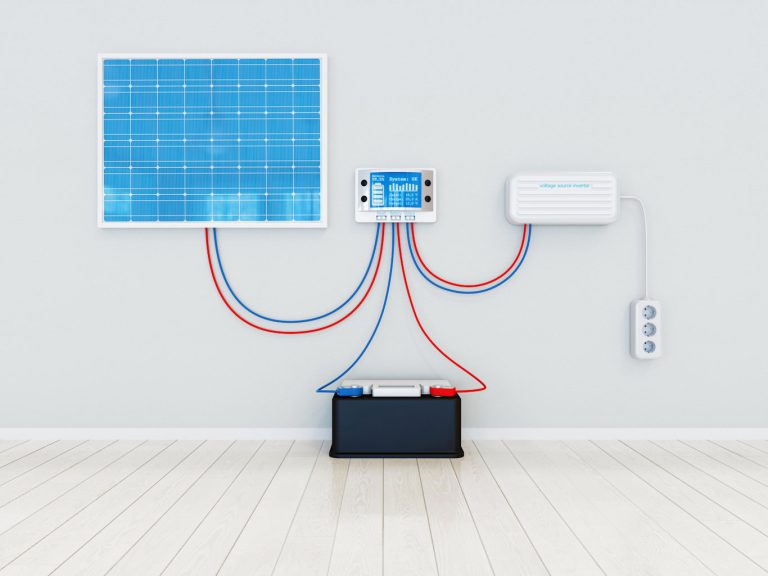Are Solar Panels Glass or Plastic?
Solar panels can be made of silicon, glass, or plastic. Plastic is used in the manufacturing of solar panels, but most are housed in a glass casing. New advances in technology have introduced the full-glass solar panel, which may allow homeowners to replace glass windows with see-through solar panels, providing power to homes.
Renewable energy is the future. We know that burning gas and coal accelerates climate change, so the world is now looking for feasible alternatives to using fossil fuels. Solar panels make use of the sun, our most substantial energy source.
While hydro energy and wind power are making ground as renewable energy sources, solar panels have been around for decades. To find out more about the history, materials, and manufacturing process, keep reading.
What Are Solar Panels?
Solar panels have changed over time. From those tiny little frames that could run your pocket calculator to huge sheets of energy that can power an entire home, solar panels have become something that is changing the landscape of energy use.
Many people complain about the cost of electricity in their homes since we now have technology that remains powered on for days at a time or longer. Worldwide energy needs and per household energy uses are ever-increasing.
The production of electricity also costs quite a lot of money. With 64.5% of electricity worldwide being produced by burning fossil fuels, the desire for clean, sustainable energy has never been higher (source).
Photovoltaic (PV) panels, more commonly known as solar panels, are semi-conductive silicone sheets that conduct electricity through the power of the sun.
The electrons in silicon are not strongly attached to their atoms, so when the sun hits those sheets, the electrons separate and become an electric current. As solar panels become more common, they have also become cheaper and more efficient.
There are several advantages of solar panels. First, energy is produced without any carbon emissions. Even though there may be carbon emissions during manufacturing, it is far from the constant carbon emissions that are released through the production of day-to-day energy.
Second, solar panels are cost-effective. Once the panels have been paid for, they should not need maintenance or replacement for years, barring any kind of damage. Most solar panels can last for 20 years or more.
Finally, the photovoltaic or PV system inside the solar cells, which allows sunlight to be converted into energy, has no moving parts. It does not require maintenance or repair.
The production of PV panels is an interesting process, and there are different types of panels produced in the world today.
What Materials Are Solar Panels Made Of?
The most critical component of PV panels is the silicon cells. Since silicon cells are semi-conductive, they can create energy by converting sunlight to usable electricity safely. The process of the electrons moving away from their atoms is called the photovoltaic effect.
Three types of silicon cells are used in the creation of solar panels: monocrystalline, polycrystalline, and amorphous.
Silicon is the 14th element on the periodic table, and a solid block is transformed into wafer-thin pieces to create the monocrystalline solar panel. These are the most expensive solar panels due to the production of monocrystalline wafers, but they are also the most efficient.
A slightly cheaper version is the polycrystalline solar cell, where silicon cells are melted into each other to create each panel. Polycrystalline solar cells are not as efficient, but easier production and manufacturing does make them cheaper.
Finally, amorphous silicon cells are a lot more flexible, but they need backing like plastic, metal, or glass to function. And their thin, non-crystalline nature makes them very inefficient. They can only be used in low-power consumers like calculators.
Generally, conventional solar cells have a high-efficiency rating (up to 30%), but commercial products usually provide 10–15% efficiency.
Even though many people will speak about solar panels as the epitome of clean energy, the production method makes a big difference in their environmental impact.
Part of the problem is that about half of the world’s components for photovoltaic manufacturing are made in countries that are not known for their commitment to the environment.
Since quartz has to be mined to create silicon, mining puts miners at risk to extract the mineral. Once the quartz has been extracted, it is then refined into silicon in huge furnaces that require vast amounts of energy, which is not coming from solar power.
However, the situation is not all doom and gloom, and more countries have become increasingly stringent with the producers of solar cells and the processes they use. Western countries are also coming up with their own innovations to make the process easier.
Bifacial solar panels are a more recent innovation. These unique solar panels allow energy to be harnessed from both sides of the panel, making them a far stronger method of collecting power.
Sunlight travels through the panel to a specialized background that refracts the sun rays back up towards the panel for more energy utilization. Therefore, in theory, the panel should be able to gather double the amount of energy.
After the silicon has been used to create the specific type of solar cell, the manufacturer adds the electrical systems, an anti-reflective coating, and the frame used to house the panels and system together. The frame can be made of plastic, glass, or a mix of both.
What Plastics Are Used in Solar Panels?
The use of silicon can be very expensive, but technology has allowed for new ways to recreate the photovoltaic effect without the use of silicon. This is where plastic plays a role.
A special blend of organic polymers and molecules are used in a similar way to silicon cells and transport power in the same way. This technology is still in development and has not become a common part of solar panel installations as yet.
Within common solar panels, there are several types of plastic that are used in the construction. Acrylonitrile Butadiene Styrene (ABS) is used for attachments. This plastic is used to brace the panels against the structure.
Plexiglass is used for the protection of solar cells and stops humidity from gathering on the panels. Solar panels are glazed in polycarbonate or polypropylene to protect the glass. Polycarbonates are also used for mobile screen protectors.
Amorphous silicon cells have long been regarded as the weaker type of solar panel and not very efficient or useful for powering homes or businesses. However, scientists have been working on making it stronger.
The new process will allow solar panels to be printed instead of using the longer, more complicated process, making panels cheaper and more readily available to the average consumer.
Finally, recycled plastic is also used in the production of solar cells. This plastic is mainly used in the casing of the solar panel as a protective layer that absorbs the pressure on solar cells from environmental and human forces.
The most apparent limitation for plastic solar cells has been their low efficiency. Plastic solar cells can only harness approximately 4–5% of the sun’s power, but new technologies are being developed every day to increase their capabilities.
Additionally, plastic solar cells are not as efficient due to their chemical makeup. When energy passes through plastic cells, they produce neutral excitons. This requires solar cells to have an electron donor and an electron receiver.
Once the exciton is broken up by transferring the electron to the receiver, it does not recombine, making it difficult to create further energy.
Scientists have also discovered that the addition of polystyrene allows for better performance compared to normal silicon cells. Since the cells become more efficient, fewer panels are needed for power, and this leads to overall savings.
When polymer plastic solar cells were first used, they required a small molecule to be added for stability. However, this molecule did not remain stable under heat and light, making it difficult to use the technology for solar panels.
Scientists have been able to do this because they have finally learned how to control the arrangement of polymer molecules. By changing the way that the polymers are packed together, pathways for electric charges to flow have become more efficient.
Since plastic is traditionally used in the structure of the solar panel, there are questions about how efficient it is as a protective layer. Read “Will a Solar Panel Work through Clear Plastic?” to find out more about the movement of sunlight through the plastic.
What Type of Glass Is Used in Solar Panels?
Initially, in the creation of solar panels, glass was used as a protective layer over the solar panel itself. While many manufacturers still use it for this purpose, glass has also been at the forefront of innovation in solar panels.
While many people assume that glass is just glass, there are actually two types of glass available in the industry. Clear glass is the regular glass that you are familiar with. Clear glass has a higher iron content than low-iron glass, which gives it a slightly greenish hue.
The second type of glass is low-iron glass. As suggested by its name, this glass uses less iron in its molten glass stage, and it creates beautifully clear glass without the green tint. It allows for more natural light to move through, making it a good choice for homes.
When scientists started the development of solar glass, the glass was expected to fulfill certain requirements.
The glass had to be very bright to allow the most sunlight to pass through, making the low-iron glass more efficient than clear glass. The glass panel also had to be strong to face extreme weather conditions like snow and gales.
Some glass types also have self-cleaning characteristics, a coating that makes the panel dust-resistant and shifts dirt off, which makes it a popular choice since it would require less maintenance in the long run. Others need occasional cleaning.
There are a few different ways glass is used in new solar panels. First, clear glass has been used as a base for solar panels. The glass is covered in a thin layer of photovoltaic film, which allows it to be used for a range of needs.
Coated solar products are not as efficient as full solar panels, but they are far cheaper and can be used in a variety of ways.
Second, low-iron glass is perfect for solar panels. Because it allows more light through than traditional glass, it is more efficient and can be used in a variety of ways, both as the cover and as the base for solar panels.
Since the development of fully transparent solar cells, glass has come to play a big role in solar panel technology.
Solar Windows
One of the biggest impediments to solar panel usage has been the need for space. To create enough energy to be viable, solar panels need a lot of space, such as rooftops or land, which did not make them ideal for many homes and businesses.
However, windows are a large part of any building, and scientists have created transparent solar cells (TSC) to fulfill this need. This technology can replicate a photovoltaic solar cell from any sheet of glass.
Designers and architects are starting to see the advantages of glass solar panels in their buildings. As technology improves, more opportunities arise for solar windows.
Some disadvantages that solar panels had included their clunky looks and prominent placement. Solar panels usually have to be placed on homes and business roofs and were far from aesthetically pleasing. That has changed.
Solar windows are the new breakthrough in solar panel technology. Scientists have discovered how to manipulate glass and plastic to make them more cost-efficient, and they can now even make solar panels that look like normal panes of glass.
Solar windows can power your home or business, and they will not stop you from seeing the world outside. Now, every building that gets hours of sunlight on its exterior can be transformed into a self-sustaining and technologically advanced powerhouse.
This technology allows the solar panel panes to be integrated into buildings without any obvious indication of its use. Further, technology is moving forward in leaps and bounds, and it is estimated that billions of square meters will be installed across the world.
Freedonia Group estimates that 8.3 billion square meters will be installed by the end of 2020, and that area alone is enough to create eight to nine percent of the world’s electricity usage.
This clean energy will change the way we view solar energy and positively impact the environment. That is why the European Union and Japan have created mandates for zero-energy buildings — buildings that consume the energy that they produce.
Other Materials Used to Produce Solar Panels
Another player in the solar panel market is perovskites crystals. Not many people outside the industry have heard of this family of minerals, but scientists are finding the extreme power that they can harness, even versus silicon solar cells.
Some types of perovskite crystals have been tested and have a power conversion of 22%, which is equivalent to traditional solar cells and far better than other solar cells.
These crystals are not a perfect mineral to use as they react badly to humidity and require extra protection, but they are an interesting addition to the solar family. They have not been used in commercial production as yet, but they have a lot of potential.
Is It Cheaper to Produce Solar Panels with Glass or Plastic?
Interestingly enough, the material used in solar panels is not as important as the amount of material used in the production of the panels.
Initially, thinner panels were not the most efficient way to create solar panels. They were far more fragile and could break more easily from environmental impacts, even though they were cheaper to produce.
Improved production methods have found that the photovoltaic silicon wafers can be made far thinner. As this technology continues to be developed, they can be produced at a fraction of the width and cost.
This new method will make it cheaper to create solar panels and increase producers’ manufacturing capabilities since less silicon is necessary.
Choosing the Best Panel Type
Choosing the right solar panel is dependent on your needs, budget, and space available.
For someone who has a lot of space, monocrystalline solar panels are cheaper and can be spread out for full efficiency. For someone who may not have the space available for installation, polycrystalline solar cells are a better option.
Polycrystalline solar cells are more expensive, but they are also more efficient, which makes them a good choice for someone who cannot install many panels. Even though the technology is improving in the weight and size of solar panels, they do require a strong structure.
Amorphous silicon cells, or thin-film panels, are a good choice for someone who has the space for solar panels but a structure that cannot support the weight of the installation. Quite a few of these panels are needed to create a strong energy system.
When buying or installing a solar system, discuss warranties with the manufacturer. Most solar panels should last between 25–30 years, and some even longer than that. While they do lose some of their efficiency over time, they are still more affordable in the long run.
The Future of Solar Power
Solar power and other forms of green energy are becoming more popular. The effects of climate change cannot be denied, and solar power is an excellent way of reducing the use of fossil fuels.
It is predicted that by 2050, at least 45–50% of the US will be using clean energy (source). Even though the startup costs of solar panels are still high and not affordable for all, the technology continues to allow for lower-cost panels, making them more readily available.
As this happens, it makes sense for more homes and businesses to switch to solar power. Even though solar energy may not be low-cost at the moment, the price of solar power installation costs has dropped between 20 to 50%.
Government subsidization also encourages consumers to switch to cleaner energy forms and helps to offset the costs.
How Will It Get Better?
Currently, solar panels are used to make about 600 gigawatts of power. This only accounts for 3% of the world’s current electricity demand, but widespread usage is expected to increase by approximately 500% in the next 10 years.
This is wonderful news for the environment and the world at large. Scientists have been making headway into creating new innovative methods to harness the sun’s power, and in 2020, they succeeded in creating self-cooling solar panels.
Solar panels are generally only able to harness about 20% of the power from the sun. The rest of the energy is simply heat that can cause the solar panels to heat up to 104°F. Anything beyond 77°F significantly lowers the efficiency of the solar panel.
Cooling systems were used to combat this issue, but that requires an entirely new system to be installed alongside the solar panels, making it much less cost-effective and difficult to maintain.
An atmospheric water collector became the solution to this problem. A gel was created that was able to suck water from the air during the night when it gets cooler and water vapor is present in the air.
Environmental engineers experimented with the gel by using it underneath solar panels and found that, depending on the environment, the gel could easily cool down the panel, and the output of the panel increased by 15% on average.
This gel system can be used in many ways, not only for cooling solar panels or keeping them clean but also to provide drinking water for areas that do not have easy access to water or may suffer from drought.
Another system to harvest solar energy involves changing the way solar panels are placed. Most solar panels are placed on roofs or spread out over an open space, angled in a way to get the most sunlight. This means that they only get the full power of the sun for a few hours.
Solar panels can become more efficient by creating them to move with the sun, and technologies have been developed that allow solar panels to shift and adjust throughout the day. However, this is another layer of cost that has to be factored into purchasing.
The upside of the technology is that solar panels are able to harness more energy throughout the day and can lead to even more savings.
Some countries have even started allowing private producers of clean energy to connect themselves to the national grid. They are then paid by the government to sell their excess energy to other users, creating a strong incentive for clean energy.
Solar Energy Changes Around the World
On a global scale, less than 2% of the world’s energy comes from solar power. Developed countries are much faster at making the switch to clean energy, but not all are progressing at the same pace.
The US is a prime market for solar energy, with companies like SunEnergy and Tesla leading the charge to bring solar energy to as many homes as possible. The adoption of solar energy in the country has a ripple effect across the world as more countries sign-on.
Scandinavian countries are doing an excellent job in clean energy, and many developing nations are following suit, especially since the effects of climate change are felt around the world.
It is predicted that by 2050, most Western countries will be using solar energy to power a large percentage of their national power grids. Estimates range from 21% for European Union countries to 40% for Australia.
In developing countries, solar power is seen as the best option for growth. Usage of oils and coal is generally more expensive for countries that do not have natural oil fields or coal mines, and solar power is becoming more common as a means to power technology.
Many developing countries have also not developed a strong infrastructure to supply energy to more rural areas, and solar panels are the perfect energy source to fill that space. With ample sunlight and open space, solar power can bring power to millions of people.
Final Thoughts
Solar energy is not going anywhere, and the market for it is only getting stronger. Governments and people worldwide have started to commit to clean energy to attempt to undo the effects of climate change, and solar power is at the forefront.
Scientists have to keep using a range of materials to make solar panels as efficient as possible, and both plastic and glass have a place in solar panel production. We should all consider its growth and development, for our sake and for the sake of our planet.
